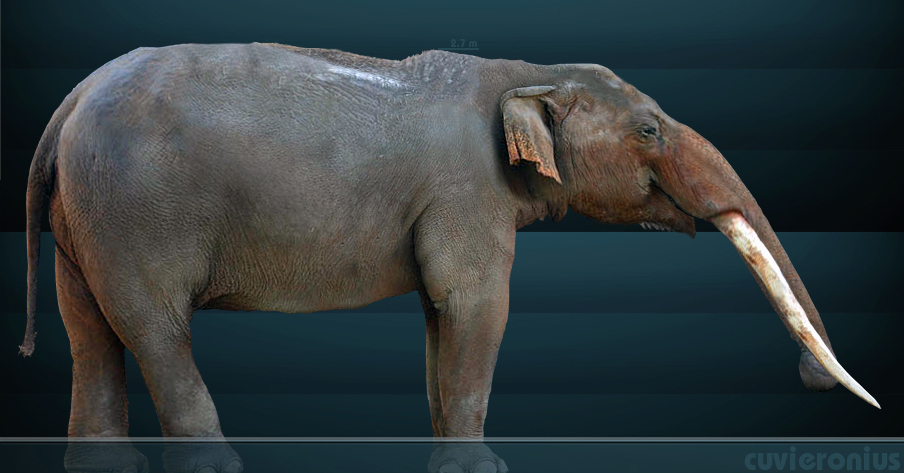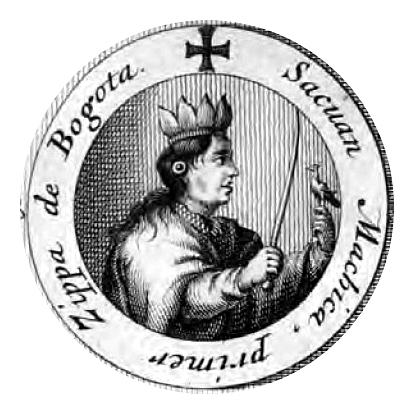|
Ubaque
Ubaque is a municipality and town of Colombia in the Eastern Province of the department of Cundinamarca. Ubaque borders the municipalities Choachà in the north, Fómeque in the east, Cáqueza and Chipaque in the south and in the west is the Colombian capital Bogotá at 56 km away.Official website Ubaque - accessed 04-05-2016 History The area around Ubaque was before the in the 1530s inhabited by the indigenous , organised in a |
Muisca Religion
Muisca religion describes the religion of the Muisca people, Muisca who inhabited the central highlands of the Colombian Andes before the Spanish conquest of the Muisca. The Muisca formed a Muisca Confederation, confederation of holy Muisca rulers, rulers and had a variety of deity, deities, temples and rituals incorporated in their culture. Supreme being of the Muisca was Chiminigagua who created light and the Earth. He was not directly honoured, yet that was done through ChĂa (goddess), ChĂa, goddess of the Moon, and her husband SuĂ©, god of the Sun. The representation of the two main celestial bodies as husband and wife showed the complementary character of man and Women in Muisca society, woman and the sacred status of marriage.Muisca religion - Pueblos Originarios - accessed 04-05-2016 The Muisca worshipped the ... [...More Info...] [...Related Items...] OR: [Wikipedia] [Google] [Baidu] |
Muisca Confederation
The Muisca Confederation was a loose confederation of different Muisca rulers (''zaques'', ''zipas'', '' iraca'', and ''tundama'') in the central Andean highlands of present-day Colombia before the Spanish conquest of northern South America. The area, presently called Altiplano Cundiboyacense, comprised the current departments of Boyacá, Cundinamarca and minor parts of Santander. According to some Muisca scholars the Muisca Confederation was one of the best-organized confederations of tribes on the South American continent. Modern anthropologists, such as Jorge Gamboa Mendoza, attribute the present-day knowledge about the confederation and its organization more to a reflection by Spanish chroniclers who predominantly wrote about it a century or more after the Muisca were conquered and proposed the idea of a loose collection of different people with slightly different languages and backgrounds.Gamboa Mendoza, 2016 Geography Climate Muisca Confederation In the time ... [...More Info...] [...Related Items...] OR: [Wikipedia] [Google] [Baidu] |
Spanish Conquest Of The Muisca
The Spanish conquest of the Muisca took place from 1537 to 1540. The Muisca were the inhabitants of the central Andean highlands of Colombia before the arrival of the Spanish conquistadors. They were organised in a loose confederation of different rulers; the '' psihipqua'' of Muyquytá, with his headquarters in Funza, the '' hoa'' of Hunza, the ''iraca'' of the sacred City of the Sun Sugamuxi, the Tundama of Tundama, and several other independent ''caciques''. The most important rulers at the time of the conquest were ''psihipqua'' Tisquesusa, ''hoa'' Eucaneme, ''iraca'' Sugamuxi and Tundama in the northernmost portion of their territories. The Muisca were organised in small communities of circular enclosures (''ca'' in their language Muysccubbun; literally "language of the people"), with a central square where the '' bohĂo'' of the ''cacique'' was located. They were called "Salt People" because of their extraction of salt in various locations throughout their territories, ma ... [...More Info...] [...Related Items...] OR: [Wikipedia] [Google] [Baidu] |
Chipaque
Chipaque is a municipality and town in the Eastern Province of the department of Cundinamarca, Colombia. The municipality of is located at an altitude of in the Eastern Ranges of the Colombian Andes with its westernmost part situated in the Eastern Hills of Bogotá. The Colombian capital is west of Chipaque. Chipaque borders Bogotá's southern locality Usme in the west. To the east, Chipaque borders Cáqueza, in the south Une and in the north Ubaque. The average temperature is . Etymology The name Chipaque is derived from the word ''Chipapabacue'', Muysccubun for "Forest of our ancestors". Symbols Flag The flag consists of two bands of the same size. One of them yellow and the other green. Yellow symbolizes wealth. Green symbolizes hope and also represents its rustic and fertile topography. A white triangle emerges from the side of the pole and its vertices converge at the center where the two bands meet. Seal Emblem framed by the sides with the flags of Colombia an ... [...More Info...] [...Related Items...] OR: [Wikipedia] [Google] [Baidu] |
Eastern Province, Cundinamarca
Eastern Province is one of the 15 provinces in the Cundinamarca Department, Colombia Colombia (, ; ), officially the Republic of Colombia, is a country in South America with insular regions in North America—near Nicaragua's Caribbean coast—as well as in the Pacific Ocean. The Colombian mainland is bordered by the Car .... Subdivision The Eastern Province is subdivided into 10 municipalities:Orden en las provincias de Cundinamarca - El Tiempo References Provinces of Cundinamarca Department {{Cundinamar ...[...More Info...] [...Related Items...] OR: [Wikipedia] [Google] [Baidu] |
Tisquesusa
Tisquesusa, also spelled Thisquesuza, Thysquesuca or Thisquesusha (referred to in the earliest sources as Bogotá, the Elder) (died Facatativá, 1537) was the fourth and last independent ruler ('' psihipqua'') of Muyquytá, main settlement of the southern Muisca between 1514 and his death in 1537. The Spanish pronunciation of his name brought about the Colombian capital Bogotá. Tisquesusa was the ruler of the southern Muisca Confederation at the time of the Spanish conquest of the Muisca, when the troops led by Gonzalo JimĂ©nez de Quesada and his brother entered the central Andean highlands. Biography Bogotá was ''cacique'' of ChĂa and following the Muisca heritage rules, he as nephew of the previous ruler Nemequene succeeded his uncle in 1514. At the start of his reign, Bogotá fought against the Panche in the west of the Muisca Confederation. The brother of Tisquesusa and later -according to Muisca heritage rule illegal- successor Sagipa was the general in the southern ... [...More Info...] [...Related Items...] OR: [Wikipedia] [Google] [Baidu] |
Nemequene
Nemequene or Nemeguene (died 1514) was the third ruler (''zipa'') of Bacatá as of 1490. His ''zaque'' counterpart ruling over the northern area of the Muisca territory was Quemuenchatocha. Etymology Nemequene in the Chibcha language of the Muisca has two possible meanings, derived from the words ''nymy'', "jaguar" and ''quyne'', meaning either "bone" or "force". Biography Nemequene succeeded to the throne of the southern Muisca in 1490 after the death of his predecessor Saguamanchica in the Battle of Chocontá where the ''zaque'' of the northern Muisca Michuá had also died. While Nemequene wanted to continue the attacks against the northern Muisca, he had to face the dangers of the Panche to the west of his territory. Nemequene installed his nephew and legal successor Tisquesusa as army general to fight off the Panche with success. Looking to expand the territory of the southern Muisca, Nemequene succeeded in the conquest of other areas in the central highlands of Colomb ... [...More Info...] [...Related Items...] OR: [Wikipedia] [Google] [Baidu] |
Bacatá
Bacatá is the name given to the main settlement of the Muisca Confederation on the Bogotá savanna. It mostly refers to an area, rather than an individual village, although the name is also found in texts referring to the modern settlement of Funza, in the centre of the savanna. Bacatá, alternatively written as Muequetá or Muyquytá, was the main seat of the ''zipa'', the ruler of the Bogotá savanna and adjacent areas. The name of the Colombian capital, Bogotá, is derived from Bacatá, but founded as Santafe de Bogotá in the western foothills of the Eastern Hills, Bogotá, Eastern Hills in a different location than the original settlement Bacatá, west of the Bogotá River, eventually named after Bacatá as well. The word is a combination of the Chibcha language, Chibcha words ''bac'', ''ca'' and ''tá'', and means "(enclosure) outside the farmfields", referring to the rich Muisca agriculture, agricultural lands of the Sabana Formation on the Bogotá savanna. Bacatá was sub ... [...More Info...] [...Related Items...] OR: [Wikipedia] [Google] [Baidu] |
Municipalities Of Colombia
The Municipalities of Colombia are decentralized subdivisions of the Republic of Colombia. Municipalities make up most of the departments of Colombia with 1,122 municipalities (''municipios''). Each one of them is led by a mayor (''alcalde'') elected by popular vote and represents the maximum executive government official at a municipality level under the mandate of the governor of their department which is a representative of all municipalities in the department; municipalities are grouped to form departments. The municipalities of Colombia are also grouped in an association called the ''FederaciĂłn Colombiana de Municipios'' (Colombian Federation of Municipalities), which functions as a union under the private law and under the constitutional right to free association to defend their common interests. Categories Conforming to the law 1551/12 that modified the sixth article of the law 136/94 Article 7 http://www.alcaldiabogota.gov.co/sisjur/normas/Norma1.jsp?i=48267 the mu ... [...More Info...] [...Related Items...] OR: [Wikipedia] [Google] [Baidu] |
Cáqueza
Cáqueza () is a municipality and town of Colombia in the department of Cundinamarca. The town, located on the Altiplano Cundiboyacense, is from the capital Bogotá. The municipality borders Fosca in the south, Ubaque in the north, Une and Chipaque in the west and Quetame in the east. Etymology The name Cáqueza comes from Chibcha and means "Region or enclosure without forest". History The area of Cáqueza in the times before the Spanish conquest was inhabited by the Muisca and Cáqueza was ruled by the ''zipa'' based in Bacatá. Modern Cáqueza was founded on October 23, 1600 by Luis EnrĂquez. Economy Main economic activities in Cáqueza are agriculture and livestock farming. Important agricultural products are beans, maize, peas and onions. Born in Cáqueza * Daniel Alejandro Torres Daniel Alejandro "Dani" Torres Rojas (born 15 November 1989) is a Colombian professional footballer who plays as a defensive midfielder. Club career Santa Fe Born in Cáqueza, Cun ... [...More Info...] [...Related Items...] OR: [Wikipedia] [Google] [Baidu] |
ChoachĂ
ChoachĂ is a municipality and town of Colombia in the Eastern Province of the department of Cundinamarca. The municipality borders La Calera in the north, Ubaque in the south, in the east FĂłmeque and westward of ChoachĂ is the Colombian capital Bogotá. The town centre is located at from the centre of the capital.Official website - information ChoachĂ - accessed 29-04-2016 Within the boundaries of ChoachĂ the Páramo de Cruz Verde is situated. Etymology The name ChoachĂ is derived from the original name in : ''Chi-gua-chĂ' ...[...More Info...] [...Related Items...] OR: [Wikipedia] [Google] [Baidu] |
Saguamanchica
Saguamanchica (died Chocontá, 1490) was the second ruler (''zipa'') of Muyquytá, as of 1470. His ''zaque'' enemy ruling over the northern area of the Muisca territory was Michuá. Alternative spellings of his name are Sacuan Machica, Saguanmachica and Saguanmanchica. Biography As former ''cacique'' of ChĂa, Saguamanchica accessed the throne of the southern Muisca around 1470. His predecessor, the first ''zipa'' of Muyquytá Meicuchuca, left him a rich kingdom with many guecha warriors. This led Saguamanchica to seek expansion of his ''zipazgo''. The first campaign of warfare he planned was to submit the eternal enemies of the Muisca, the Panche and the Sutagao to the west of the Muisca territories. The Carib-speaking peoples formed an alliance against their common and far outnumbered enemy. Saguamanchica together with his vassal Pasca defeated his enemies led by general Uzatama with ease and annexed Fusagasugá and Tibacuy. The expansion policies of the southern Muisc ... [...More Info...] [...Related Items...] OR: [Wikipedia] [Google] [Baidu] |







